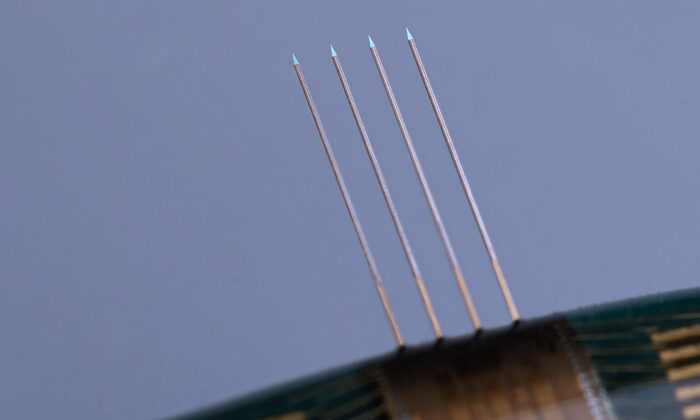Elon Musk's Telepathy chip is the most famous, but it is in the company of dozens of projects around the world, with dozens of brain implants to control speech and movement, rising to hundreds considering tests on animals.
Numerous experiments have also been conducted in Italy, where work is underway to arrive at the first implants within the human cerebral cortex.
"The technology developed by Musk's company is the least invasive and most effective tested so far", observes bioengineer Silvestro Micera, who works between the Scuola Superiore Sant'Anna in Pisa and the Polytechnic of Lausanne.
“
The idea of brain implants was born many years ago
and the first experiment was published in
2006
by the journal Nature,” he adds.
Since then
the technology has evolved
, moving from the rigid silicon needles of the beginning to the less invasive Neuralink flexible-based electrodes.
"How much all this will have a clinical impact, we will see in the future."
In Italy, implants inside the cortex have not yet been made, "but he - he said - we are moving in this direction".
The greatest progress in implantable chips has come in the last ten years
, observes Gian Nicola Angotzi, researcher at the Italian Institute of Technology, co-founder and scientific director of the start-up Corticale.
Here the new compact chip with over a thousand electrodes was born.
"Until about ten years ago,
implantable electrodes were used with a few measurement points
", based on
needles along which the electrodes were positioned
,
connected by a wire to an external recording point
.
This complex structure required limiting the number of measurement points to make the systems less invasive.
A different approach has been followed for ten years
: on the same chip there are both the contacts that detect the activity of the neurons and the electronics to amplify and read them.
This, continues Angotzi, has led to two developments, both on the market and used in preclinical research: on the one hand the chips from the American Neuropixels, developed in Belgium and based on many measurement points along a needle the size of a hair and with the part that amplifies the external signal;
on the other there are the chips of the Italian SiNaps, born at the Iit on the initiative of Angotzi, Luca Berdondini and Fabio Boi, now merged with Corticale.
"Here - says the researcher - we managed to put the amplification electronics under each electrode which allows us to read the data with very high resolution".
Compared to these technologies, "Neuralink hasn't done anything new
.
It uses implantable passive electrodes with the amplification electronics outside the implant.
The news
- he observes - is in bringing the electrodes onto a
flexible substrate
, "it also has a
robot
to implant the chips in an automated way.
Neuralink's direct competitor, Blackrok Neurotech
, has 19 years of research under its belt, 1,700 scientific publications and one about ten implants on humans, practiced for about eight years on an experimental level on quadriplegic people, with a sort of 'mat' of needles gathered in a square centimeter, with 100 electrodes. Musk, who "has never gone through standard scientific procedures , implanted a thousand electrodes, but making over 60 holes in the tissue.
The innovation that is now expected from Neuralink - observes Angotzi - is the advantage of recording from a thousand measurement points".
Even in Italy the objective is to perform the first chip implants inside the cerebral cortex
. "We are still in the preclinical, we are working to bring this technology into the clinical field, but with the times dictated by the legislation and the steps necessary for authorizations for clinical studies.
For Musk it's different: with his infinite resources he managed to experiment on humans in 6-7 years."
Reproduction reserved © Copyright ANSA

